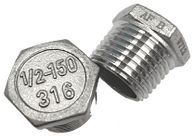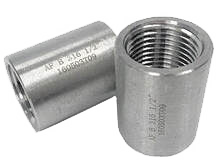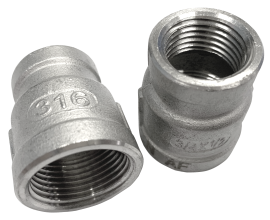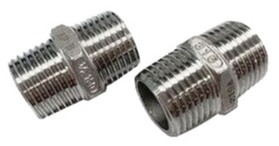Class 150 Fittings
Class 150 fittings are used in piping system to alter directions and to make connections among the equipment. These class 150 fittings are used to regulate the low-pressure fluid or gas. It is usually used for non-critical and low cost applications. The size ranges are from 1/8” to 4” (DN6 to DN100).
Class 150 fittings are used mainly in the plumbing, waterworks, oil and gas industry, where there are low pressure piping requirements. Threaded low-pressure fittings allow the installer to reassemble it at any time and welding isn't mandatory.
Class 150 fittings are used mainly in the plumbing, waterworks, oil and gas industry, where there are low pressure piping requirements. Threaded low-pressure fittings allow the installer to reassemble it at any time and welding isn't mandatory.
Size |
|
Material |
|
Working Pressure |
|
Connection |
|
CATALOGUE :
What are class 150 Fittings
1. What are class 150 fittings used for?
The pipe with threaded end will be used to tighten up with fittings to extend the flow direction. These fittings are also known as class 150# or 150 LB fittings. Class 150 fittings are made conform to ASTM A351 CF8M/316 Stainless Steel material.
The pipe with threaded end will be used to tighten up with fittings to extend the flow direction. These fittings are also known as class 150# or 150 LB fittings. Class 150 fittings are made conform to ASTM A351 CF8M/316 Stainless Steel material.
2. What are class 150 fittings pressure ratings?
|
Stainless steel material ensures corrosion resistance and overall durability. Brass or malleable iron have lesser corrosion resistance compared to stainless steel which is why stainless steel material is applicable in all systems to last for a longer time. Class 150 fittings are functional only in low-pressure conditions and the maximum pressure that the fitting can withstand is up to 150 psi.
|
3. What are threaded class 150 fittings?
In general, there are two types of connections available for low-pressure threaded fittings, NPT (National Pipe Thread) and BSPT (British Standard Pipe Tapered). With the class 150 fitting as a connector, it would stop the leakage from the connection of the two pipes.
In general, there are two types of connections available for low-pressure threaded fittings, NPT (National Pipe Thread) and BSPT (British Standard Pipe Tapered). With the class 150 fitting as a connector, it would stop the leakage from the connection of the two pipes.
|
NPT is similar to BSPT except the angle across the flanks of threads is 60 degrees and while BSPT has 55 degrees. Therefore, NPT and BSPT thread cannot be used together. The connection needs to correspond to each other. For example, NPT fittings female thread need to tighten up with NPT male thread and the same to BSPT male and female thread.
|
4. What are the different types of class 150 fitting?
|
There are many class 150 fitting designs to choose when customizing a system flow direction and calculating a flow rate. The class 150 fittings are elbows, tees, caps, couplings, reducers and unions , the common fittings that are used in major systems. Majority of the fittings are female thread except hex/square bush, hex nipple and street elbow, which hex/square bush and street elbow are one side male and one side female thread. Hex nipple are both sides of the male thread.
|
5. How do you install class 150 fittings?
To minimize installation leakage , please follow 4 simple steps below:
Step 1: First, thread the male fitting with Teflon tape or plumber’s tape which is used to establish a tighter seal to prevent seepage.
Step 2: Steer clear of excess application of Teflon Tape.
Step 3: Then tighten the joints by using the wrench but avoid excessive screwing which might cause damage to the fitting or pipe.
Step 4: Make sure that the size of the fitting is respected to the size of the pipe. Installers have to ensure the same alignment is very important and must take into consideration when making a connection.
To minimize installation leakage , please follow 4 simple steps below:
Step 1: First, thread the male fitting with Teflon tape or plumber’s tape which is used to establish a tighter seal to prevent seepage.
Step 2: Steer clear of excess application of Teflon Tape.
Step 3: Then tighten the joints by using the wrench but avoid excessive screwing which might cause damage to the fitting or pipe.
Step 4: Make sure that the size of the fitting is respected to the size of the pipe. Installers have to ensure the same alignment is very important and must take into consideration when making a connection.
CATALOGUE :





